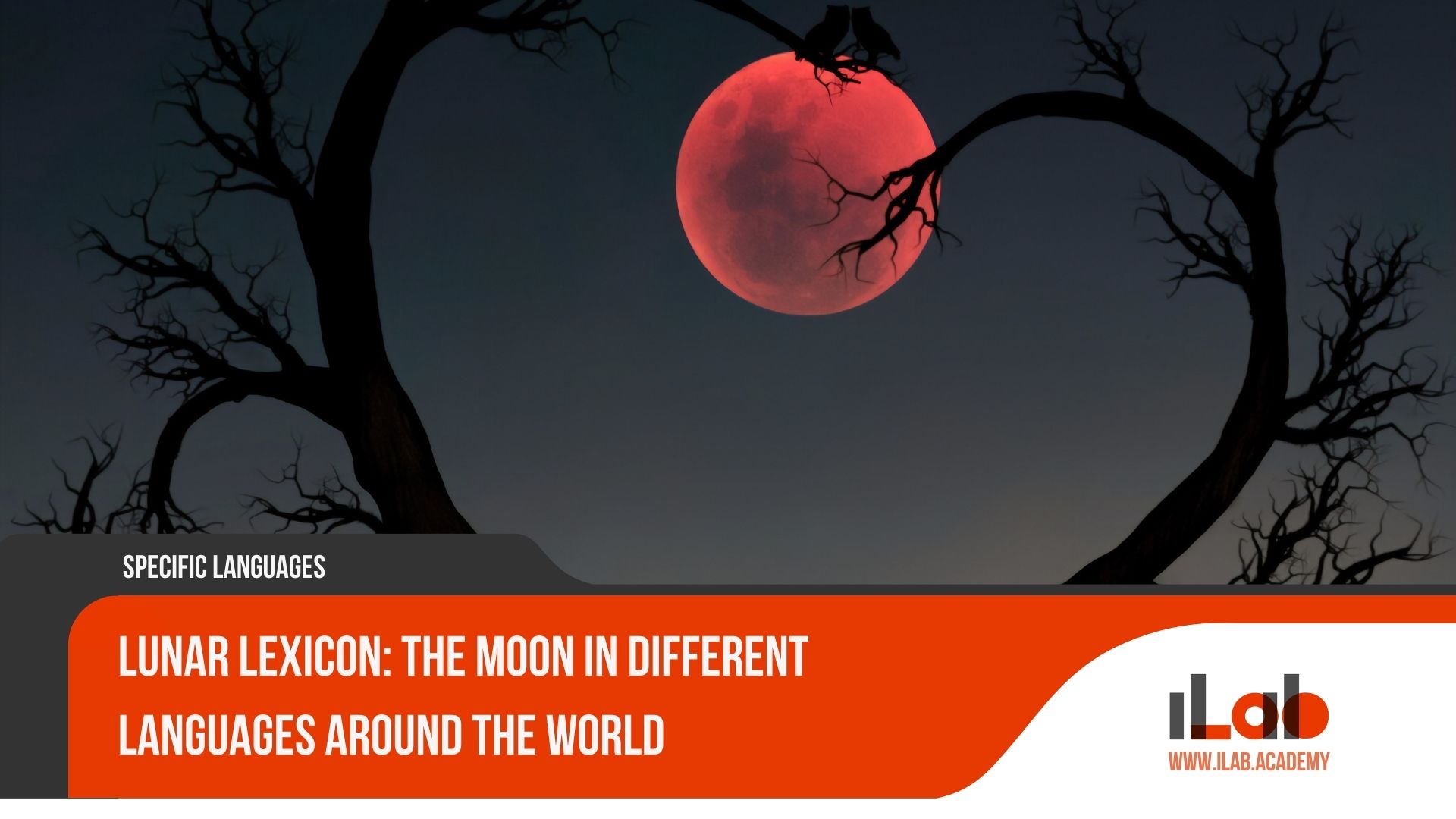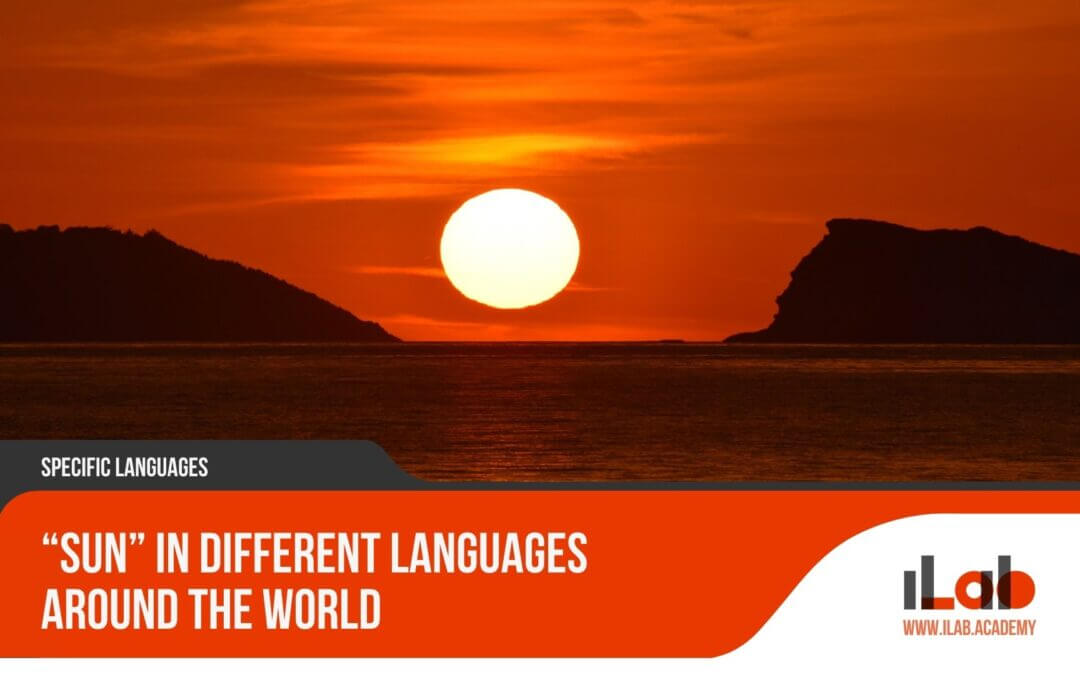Table of contents
The moon, in its silent orbit, has been a constant companion to Earth, shaping human culture, language, and understanding of time and space. Across the globe, the names we ascribe to this celestial neighbor reveal a mosaic of human thought, intertwining mythology, natural observation, and scientific inquiry. In “Lunar Lexicon: The Moon in Different Languages Around the World,” we embark on an intellectual journey to explore the diverse terminologies and narratives that different cultures have developed to describe and relate to the moon. This exploration not only promises to enrich our linguistic knowledge but also to offer a unique lens through which to view our shared yet varied human heritage. Join us as we traverse this linguistic landscape, where each name for the moon shines light on the rich tapestry of human civilization.
Key Takeaways
- The moon’s name varies across languages, reflecting diverse cultural and natural connections.
- Scientific and academic terms for the moon demonstrate Latin’s influence and promote global collaboration.
- Expressions and idioms related to the moon capture unique cultural beliefs and perceptions.
- Preserving lunar language is crucial for understanding cultural heritage and fostering global unity.
If you’re intrigued by how different cultures refer to the moon and want to expand your linguistic horizons, we recommend checking out our comprehensive review of Lingoda. Lingoda offers online courses in languages like English, French, and Spanish, helping you explore the rich diversity of language from the comfort of your home.
The Significance of the Moon in Global Cultures
Throughout history, the moon has played a pivotal role in shaping the cultural, religious, and mythological landscapes of societies worldwide, serving as a celestial muse that has inspired a plethora of linguistic variations and narratives. This fascination with the moon transcends geographical boundaries and epochs, underscoring its universal significance. The moon’s phases have been integral to the development of calendars, agricultural planning, and maritime navigation, embedding itself in the daily lives and survival strategies of ancient civilizations.
In various mythologies, the moon has been personified and deified, reflecting its importance in human imagination and belief systems. For instance, in ancient Egypt, the moon was associated with Thoth, the god of wisdom and knowledge, highlighting the moon’s role in the measurement of time and the ordering of the cosmos. Similarly, in Greek mythology, Selene, the goddess of the moon, represented the lunar cycle, illustrating the moon’s influence on natural rhythms and human affairs.
The moon’s omnipresence in the night sky has made it a symbol of mystery, beauty, and power in poetry, art, and literature, further attesting to its cultural and spiritual significance. Its impact on tides and its illumination during the nighttime have also endowed the moon with attributes of change, renewal, and guidance, themes that resonate across many cultures.
Explore the Lunar Lexicon: Discover “Moon” in Different Languages and Learn with Lingoda
The moon captivates cultures across the globe, but how it’s named differs in every language. Discover the word for “moon” in various tongues and take the chance to expand your language skills. With Lingoda, you can master English, French, Spanish, and more with flexible, personalized online courses.
Romance Languages: The Moon’s Linguistic Cousins
Exploring the names given to the moon in Romance languages uncovers a fascinating network of linguistic connections, all tracing back to their Latin origins. This exploration not only reveals the rich etymological tapestry that weaves these languages together but also offers insights into the cultural significance of the moon across these linguistic landscapes. The common root in Latin, luna, serves as a testament to the enduring influence of the Roman Empire on the languages that evolved from Latin.
The similarities among Romance languages in naming the moon demonstrate not just shared origins but also the nuances that make each language unique. Here are four notable examples:
- Italian: In Italian, the moon is called luna. This direct descendant of Latin showcases the language’s close adherence to its classical roots.
- Spanish: Spanish refers to the moon as luna, mirroring the Italian and directly tracing back to Latin. The similarity highlights the linguistic kinship and shared heritage between these languages.
- French: The French word for moon is lune, a slight variation from the Latin original. This difference exemplifies the unique evolution of French from Latin, influenced by Gaulish and Frankish.
- Romanian: Romanian, often considered the closest living language to Latin, calls the moon lună. This further underscores the direct lineage from Latin to the Romance languages.
Understanding how Romance languages describe the moon illuminates not only their common origin but also the individual paths they have taken over centuries. This linguistic journey into the cosmos reflects the timeless fascination with the moon, uniting people across cultures and histories through the shared legacy of language.
Slavic Languages: A Spectrum of Slavic Selenonyms
Delving into the Slavic languages reveals a rich tapestry of names for the moon, each reflecting the unique phonetic and cultural landscapes of this linguistically diverse family. The exploration of these names allows us to uncover the intertwining of linguistic evolution and cultural significance, presenting a fascinating spectrum of Slavic selenonyms.
In the Slavic linguistic realm, the moon’s appellations often share common roots, indicative of shared ancestral languages and cultural narratives. However, the variations in pronunciation and spelling highlight the distinct paths these languages have traversed over centuries. For instance, in Russian and Ukrainian, the word for moon is “луна” (luna), closely mirroring its Proto-Slavic origin. This similarity extends to other Slavic languages, with slight phonetic adjustments, such as “mesiac” in Slovak and Czech, showing the nuanced evolution of language and its tie to celestial objects.
The names not only denote the moon but also carry layers of cultural and mythological meanings. Many Slavic cultures have folklore that personifies the moon, attributing to it roles and characteristics that reflect ancient beliefs and societal values. These narratives are often encapsulated in the language itself, offering insight into how the moon has been perceived and revered across different Slavic societies.
Understanding the variance and commonality in the names for the moon among Slavic languages opens a window into the past, revealing the shared heritage and divergent stories of these peoples. It underscores the power of language as a vessel for history, mythology, and collective identity, enriching our appreciation of the cultural tapestry that the Slavic family of languages weaves.
Asian Languages: The Moon’s Many Names in the East
Turning our focus to the vast continent of Asia, we uncover a diverse array of names for the moon, each embedded with unique linguistic and cultural insights. The Asian continent, with its rich tapestry of languages, offers a fascinating glimpse into how different cultures perceive and relate to the moon. From the intricate characters of East Asian scripts to the diverse phonetics of South and Southeast Asian languages, each name for the moon carries with it a story, a piece of history, or a mythological significance that reflects the unique perspectives of its people.
- Mandarin Chinese: In Mandarin, the moon is referred to as “月” (yuè), a character that not only denotes the celestial body but is also deeply interwoven with festivals such as the Mid-Autumn Festival, symbolizing reunion and fullness.
- Japanese: The Japanese word for the moon, “月” (tsuki), shares the same character with Mandarin but is steeped in its own array of folklore and tradition, highlighting the moon’s beauty and impermanence in poetry and art.
- Hindi: In Hindi, the moon is called “चांद” (chānd), a term that evokes romantic and poetic imagery, often found in love songs and classical literature, capturing the moon’s enchanting allure.
- Thai: The Thai language refers to the moon as “ดวงจันทร์” (duang jan), linking it to various festivals and traditions that celebrate the moon’s influence on agriculture and timekeeping.
These names, each distinct in sound and script, reveal the multifaceted roles the moon plays in Asian cultures—inspiring art, marking time, and bringing people together.
Indigenous and Aboriginal Names for the Moon
Venturing beyond the familiar, we encounter the rich tapestry of indigenous and aboriginal names for the moon, each imbued with profound cultural and natural significance. These names, often deeply intertwined with the environment and the lore of their respective cultures, offer a window into the ways indigenous and aboriginal peoples relate to the celestial body that lights up the night sky.
Indigenous and aboriginal languages carry names for the moon that reflect not just a linguistic diversity but also a variety of cultural insights and interpretations of the lunar cycles. For instance, in many Native American cultures, the moon is named according to the changing seasons and the natural world’s rhythms. Each phase of the moon might tell a story, mark time for planting or harvesting, or signify important ceremonial periods. Similarly, in Australia, Aboriginal communities have their unique names and stories associated with the moon, emphasizing its role in their cosmology and its influence on the land and sea, including tides and animal behaviors.
These indigenous and aboriginal names and stories about the moon highlight a profound connection to the natural world, seen through the lens of their rich cultural heritage. By exploring these diverse and meaningful ways of referring to the moon, readers gain a broader perspective on the universal human fascination with this celestial neighbor. It underscores the importance of preserving these languages and stories, as they offer invaluable insights into the human relationship with the cosmos, grounded in a deep respect for nature.
African Languages: Diverse Descriptors of the Lunar Surface
The linguistic landscape of Africa, with its rich tapestry of languages, offers a unique array of names and descriptions for the moon, reflecting the continent’s vast cultural and linguistic diversity. Across Africa, the moon is not just a celestial body but a source of inspiration, mythology, and timekeeping, deeply woven into the fabric of daily life and the natural world. The names given to the moon in various African languages often carry profound meanings, encapsulating the relationships between people, their environment, and the cosmos.
- Swahili (East Africa): In Swahili, the moon is called ‘Mwezi’, a term that is as poetic as it is descriptive, highlighting the moon’s role in marking the months and seasons. It’s a testament to the moon’s integral part in agricultural planning and festivities.
- Zulu (South Africa): The Zulu word for the moon, ‘Inyanga’, denotes both the lunar body and the concept of the month. This dual meaning underscores the moon’s importance in timekeeping and its influence on traditional Zulu medicinal practices and rituals.
- Amharic (Ethiopia): In Amharic, the moon is named ‘ጨረቃ’ (Cherqa), reflecting its radiant light in the night sky. The name evokes imagery of brightness and clarity, celebrating the moon’s illumination of the Ethiopian highlands during the night.
- Hausa (West Africa): The Hausa language calls the moon ‘Wata’, a name that captures its cyclical nature and its role in the Islamic calendar, which is pivotal in organizing religious events and agricultural activities across the Sahel region.
The diversity of these descriptors not only highlights the linguistic richness of Africa but also offers insight into how different cultures perceive and integrate the lunar cycle into their lives.
The Science of Selenonyms: Astronomical Terms Across Languages
Delving into the realm of scientific inquiry, the terminology used to describe the moon in various academic and research settings reveals a fascinating interplay between linguistic diversity and the universal pursuit of knowledge. The scientific discourse surrounding our natural satellite transcends linguistic barriers, highlighting how the quest for understanding celestial bodies brings together cultures under the umbrella of shared curiosity and scholarly endeavor. This exploration into the science of selenonyms—astronomical terms related to the moon—sheds light on the rich tapestry of language and its capacity to both diversify and unify our comprehension of the cosmos.
In the academic sphere, the precision of language is paramount. Terminologies such as “lunar,” derived from the Latin word “luna,” and its equivalent in various languages—“lunaire” in French, “lunar” in Spanish, and “лунный” in Russian—demonstrate the widespread influence of Latin on scientific lexicons. This linguistic commonality facilitates a global dialogue among scientists, allowing for seamless collaboration and knowledge exchange across different linguistic and cultural boundaries.
Moreover, the adoption of specific terms for lunar features, such as “mare” (Latin for “sea”), used to describe the dark basaltic plains on the moon’s surface, further exemplifies how scientific nomenclature adopts words from different languages to enrich and standardize the scientific discourse. The consistent use of these terms across languages not only enhances clarity and precision in scientific communication but also fosters a sense of global community among researchers and scholars dedicated to unraveling the mysteries of our nearest celestial neighbor.
Expressions and Idioms Involving the Moon
Moving beyond the scientific terminology, we now explore the myriad ways in which the moon permeates everyday language through expressions and idioms that reflect diverse cultural narratives and beliefs. The fascination with the lunar body transcends its physical presence, embedding itself into the fabric of human communication. These expressions and idioms offer a window into how different cultures perceive and relate to the moon, often attributing to it qualities, behaviors, and influences that go beyond its role in the night sky.
- “Once in a blue moon” (English): This idiom conveys rarity and infrequency, inspired by the unusual occurrence of having two full moons in a single calendar month, the second of which is termed a “blue moon.”
- “月に代わってお仕置きよ!” (Japanese): Translating to “In the name of the moon, I will punish you!” this phrase from the popular anime Sailor Moon highlights how the moon is often personified and imbued with power and authority in Japanese culture.
- “Alunizar” (Spanish): Stemming from the word “luna” (moon), this verb means to land on the moon, reflecting humanity’s dream and achievement of lunar exploration. It’s a testament to the moon’s role in inspiring achievements and aspirations.
- “Clair de lune” (French): Meaning “moonlight,” this expression is often associated with romance and beauty, reflecting the moon’s influence on human emotions and its role in creating atmospheric scenes in literature and music.
Each of these idioms and expressions, rich in imagery and meaning, underscores the enduring impact of the moon on human culture and language.
Preserving Lunar Language: The Dialects of Darkness and Light
As globalization advances, the urgency to safeguard linguistic diversity, especially in terms of unique lunar terminology found in minority languages, becomes increasingly paramount. The moon, a universal symbol across cultures, embodies various significances that are often encapsulated in the languages that observe it. Each term for the moon illuminates not only a celestial body but a repository of cultural wisdom, folklore, and ancestral knowledge. The words used to describe the moon, its phases, and its influence on the earth transcend mere nomenclature; they are the dialects of darkness and light, a testament to human interaction with the cosmos.
Efforts to revitalize and preserve minority languages are crucial in maintaining this linguistic heritage. These endeavors are not just about saving words but are a fight to keep alive the diverse perspectives and interpretations of the world that these languages represent. The moon’s appellations across languages are a mosaic of humanity’s collective cultural history, offering insights into how different societies have related to this enigmatic celestial neighbor.
Understanding and preserving these lunar terms is therefore an essential aspect of cultural preservation. It involves recognizing the intricate bond between language, identity, and cosmology. By documenting and revitalizing these words, we not only honor the past but ensure that future generations can access the rich tapestry of human thought and imagination that the moon has inspired. Thus, the preservation of lunar language is an endeavor of paramount importance, a bridge connecting the past, present, and future in the continuous dialogue between humanity and the universe.
Frequently Asked Questions
How Do Lunar Phases Influence the Naming Conventions of the Moon in Various Cultures, and Can Examples of Phase-Specific Names Be Found in Certain Languages?
The inquiry delves into how lunar phases impact the naming conventions of the moon across different cultures, seeking examples of phase-specific names in various languages. This exploration reveals that cultural perceptions of lunar phases significantly influence the terminologies used to describe the moon. For instance, in many languages, distinct names are attributed to the full moon and new moon, reflecting their unique cultural and astronomical significance. These names often embody the cultural narratives and agricultural practices associated with each phase.
In What Ways Have Historical Lunar Events, Such as Eclipses or Supermoons, Impacted the Development of Unique Terms or Expressions for the Moon in Different Languages?
Historical lunar events, including eclipses and supermoons, have significantly influenced the development of unique terms and expressions for the moon across various languages. These celestial phenomena often carry cultural or spiritual significance, leading to the creation of specific nomenclature that reflects the community’s perceptions and folklore. Such linguistic variations not only enrich the lexicon but also offer insights into how societies historically related to and were impacted by these remarkable lunar occurrences.
How Do Children’s Nursery Rhymes or Folklore in Different Cultures Incorporate the Moon, and Do These Narratives Affect the Linguistic Terms Used to Describe It?
Children’s nursery rhymes and folklore across various cultures often feature the moon prominently, weaving it into narratives that reflect cultural values and perceptions. These stories frequently anthropomorphize the moon, granting it qualities that can influence the linguistic terms used to describe it within a culture. For example, a culture that depicts the moon as a benevolent guardian in tales may adopt more affectionate or reverent terms for it in their language.
Are There Any Global Initiatives or Collaborative Projects Aimed at Standardizing Moon-Related Terminology, Especially for Scientific Communication Across Languages?
There are global initiatives aimed at standardizing moon-related terminology for scientific communication. Organizations such as the International Astronomical Union (IAU) play a pivotal role in this effort, ensuring that lunar nomenclature is consistent across different languages. This facilitates international collaboration in lunar research and exploration. Such standardization is crucial for accurate data exchange and coordination among scientists worldwide, promoting a unified understanding of lunar studies.
How Do Technological Advancements in Space Exploration Influence the Creation of New Words or Phrases for the Moon in Languages Around the World, and Can Examples of Such Neologisms Be Identified?
Technological advancements in space exploration significantly impact the evolution of languages, leading to the creation of new terms for celestial phenomena, including the moon. These neologisms arise from the need to describe novel discoveries and concepts that previous lexicons did not encompass. For instance, terms like “lunar regolith” (moon soil) and “mare” (lunar plains) have been integrated into scientific discourse, showcasing how exploration propels linguistic expansion across cultures.
Conclusion
In conclusion, the exploration of the moon’s nomenclature across diverse languages and cultures reveals a profound connection between humanity and this celestial body. Through the linguistic and cultural lenses, one observes the moon’s influence on myths, stories, and scientific understanding globally. This journey through the lunar lexicon not only showcases the rich diversity of human perception and interaction with the moon but also underscores the universal fascination and reverence held for it, binding disparate cultures in a shared celestial experience.














